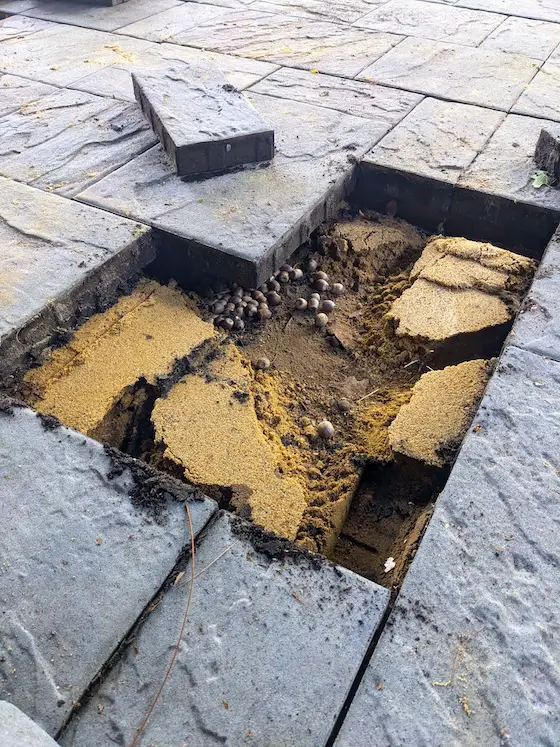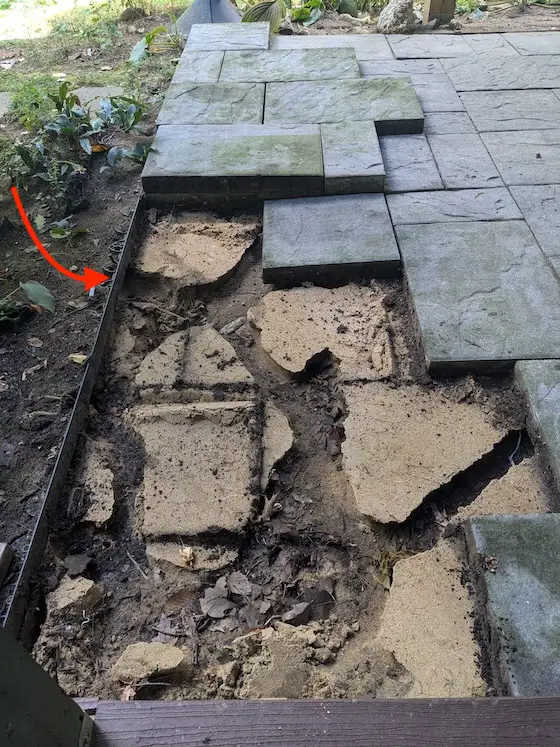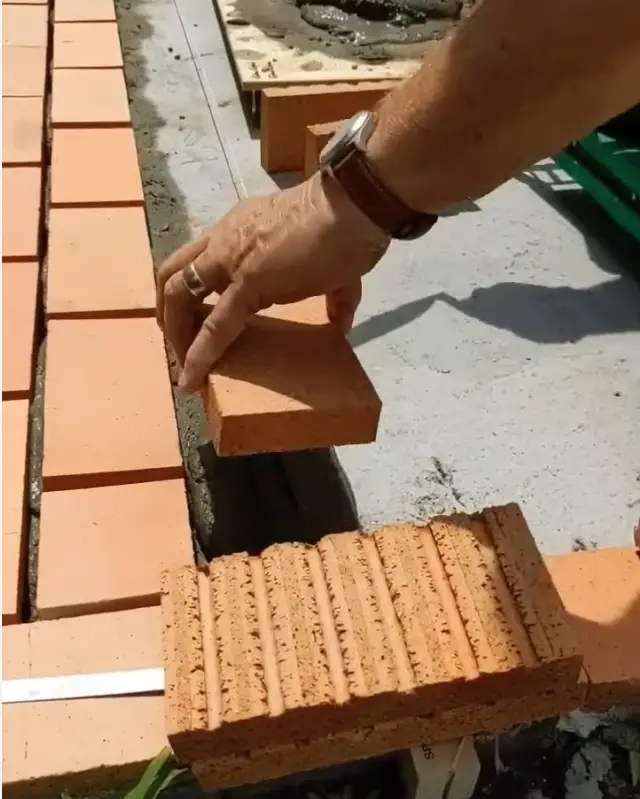Fix Pavers Uneven

Fix Pavers Uneven - This chipmunk cafeteria is now closed for business. The little demons rolled 30-50 acorns through a labyrinth of tunnels under the concrete paver stones to stock the cafeteria pantry. Copyright 2024 Tim Carter
Author Note: The patio featured in this column was a rush job for my wife. I feel the best way to install a patio is to mortar brick to a 5-inch-thick steel-reinforced concrete slab. You can read about this method in my past columns:
My Mother-in-Law's Patio Before I was a Builder
Fix Pavers Uneven - Chipmunk Tunnels Cause Pavers to Drop
I installed an attractive concrete paver patio for my wife seven years ago. I knew it would fail, but didn’t know when. She wanted the patio completed as soon as possible. This tight deadline requirement dictated I had to set the patio stones on sand instead of mortaring them to a steel-reinforced concrete slab.
My new flat patio soon was not so flat. It's now time to fix the pavers that are uneven. The sand beneath the pavers was being transported away grain-by-grain by union members of chipmunk miners local 104. They found the sand easier to dig through than the sandy soil under my lawn. The concrete pavers provided a sturdy roof to keep their nests dry.
Frost Heave Can Cause Uneven Pavers
I live in central New Hampshire. The winters bring cold weather. Frost heave is a reality. The up and down seasonal movement wreaks havoc on things that rest on the soil. Ancient stone walls built two hundred years ago to outline livestock pastures tolerate this movement to a great extent. Flat patio and sidewalk stones not so much.
Chipmunk Miners
The greater threat is burrowing mammals like chipmunks, mice, and who-knows-what. In my case, it’s chipmunks. These cute furry demons are as prolific in my neighborhood as vacationers who overrun my state year-round.
Chipmunks tunnel through the soil like you might dig in a huge pile of styrofoam packing peanuts. It’s child’s play for the tiny creatures to create an extensive labyrinth of interconnecting tunnels. They do this for survival, and it’s baked into their DNA.

The red arrow points to one of the tunnel entrances. The chipmunks have no less than three ways in and out from beneath the concrete pavers. Seven years ago all you would have seen is the light-colored sand. At least 40% of it has been removed by the wretched mammals. Copyright 2024 Tim Carter ALL RIGHTS RESERVED
My large-format concrete pavers range in size from 8x16 inches all the way up to 16 by 24 inches. The pavers are 2.5 inches thick. They’re heavy. The chipmunks can’t move the pavers but they can make them drop an inch or more by removing the dry sand beneath them.
My wife asked me to repair the uneven patio a month ago. Some small and medium pavers would tip back and forth as you walked on them. The last thing I want is for my bride of fifty years to fall and break her hip.
Plan A: Sand and Cement
I didn’t know the extent of the damage when I came up with my repair plan. I thought, at first, that just a few stones needed to be lifted back up. I purchased a few bags of dry sand and a bag of pure Portland cement. I was going to mix 3 parts sand to 1 part cement and place it under the sunken pavers.
My plan was to start at one corner of the patio and work a rectangle that was about 5 feet wide and 12 feet long. I was stunned when I lifted up the first paver. Fifty percent of the sand was gone. A small maze of tunnels was under this large paver. The interconnecting tunnel system grew as I pulled up more and more stones.
Three pavers in the center of the patio required emergency repair. I pried up a small 8x16-inch paver and lifted two adjacent larger pavers. I stood back in awe, shaking my head, looking down at the local chipmunk cafeteria.
Packed dried oak leaves were brought from outdoors. The chipmunks used these to create a nest. Next to this was a pile of 30-50 fresh acorns. The chipmunks, no doubt, were none too happy about me discovering their lair.
I made a temporary repair using just sand. I’d perform a permanent repair on this section in the spring. Sand and cement was not going to do the job. I had to come up with a permanent fix.
Plan B: A 2-inch Thick Concrete Slab with Steel
I purchased twenty-five 60-pound bags of dry concrete mix. I also purchased 3/8-inch steel reinforcing rods. These rods are often called pencil rods because they're just about the same diameter as a pencil. My new plan was to install a thin flat concrete slab the pavers would rest upon. The chipmunks would never harm this new 2-inch concrete slab.
The steel rods laid 16 inches on center both directions would ensure the concrete would stay in the same plane over time. The chipmunks might re-create their tunnel maze in the gravel and soil under the slab, but the concrete will span the 2-inch-wide tunnels and not drop.
Look at this photo. This is the BEST way to install a brick paver patio. CLICK HERE to watch me lay two bricks.
I removed all the old sand. The hole was now 4.5 inches deep below the top of the patio. My plan is to install the dry concrete mix in two 1-inch lifts. The first lift will be compacted and I’ll lay the steel rods on the mix. I’ll then install the second inch of dry concrete.
I’ll take great care in getting this second concrete mix layer flat to resemble the surface of the sand as I installed it seven years ago. I’ll then mist the concrete with water to start the hydration chemical reaction that transforms the concrete into artificial stone.
A day later I’ll lay the concrete pavers on the hard concrete. They’ll be installed in the exact same interlocking pattern as I did seven years ago. The chipmunks delight my wife, but for me they’ve become my back’s nemesis.
Your takeaway should be this. If you have tunneling mammals where you live, don’t use sand. Install dry concrete mix in place of the sand. Don’t forget to put in the steel rods.
Column 1582

5 Responses to Fix Pavers Uneven